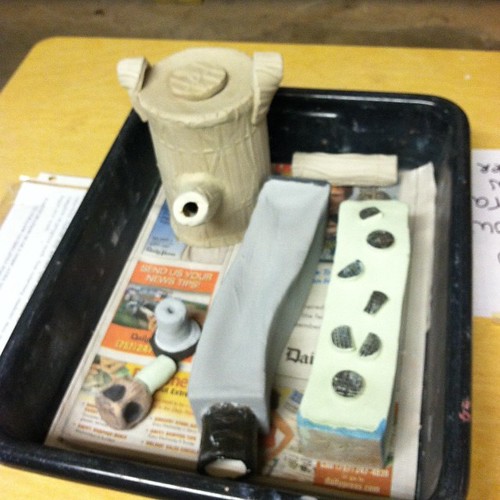The cone 04 temperature in Celsius is a critical parameter in the ceramic firing process, especially for low-fire pottery. This temperature range, typically between 1046°C and 1077°C, is used predominantly in bisque firing and for certain glazes. Understanding these temperatures and their corresponding rates of increase per hour is essential for creating desired ceramic outcomes, influencing both the aesthetics and functionality of the final piece. By comparing cone temperatures in both Fahrenheit and Celsius across different firing rates, potters can better control the maturation process of their work.
| Cone Number | Temperature (Celsius) | Heating Rate (°C/Hour) |
|---|---|---|
| 04 | 1046°C | 15°C |
| 04 | 1063°C | 60°C |
| 04 | 1077°C | 150°C |
Understanding Cone 04 and Its Role in Ceramic Firing
When it comes to ceramic firing, cone 04 is a pivotal temperature. Ranging from 1046°C to 1077°C, cone 04 is typically employed in low-fire pottery, often used in both bisque firing and the application of specific glazes. But what makes this range so crucial? The temperature at which you choose to fire can significantly influence the end result, affecting both the physical properties and aesthetics of your pottery.

The Significance of Firing Rates
Firing rates impact the behavior of pyrometric cones profoundly. These cones gauge not just temperature, but the “heat work” or cumulative heat applied over time. Let’s break down why firing rates matter:
- Slow Rate (15°C/Hour): Helps in reducing thermal shock, critical for delicate pieces susceptible to cracking. At this pace, cone 04 reaches around 1046°C.
- Moderate Rate (60°C/Hour): This is a balanced approach, reaching 1063°C. It’s commonly used for robust wares that still need careful heat application to avoid surface issues.
- Fast Rate (150°C/Hour): Peaks at 1077°C, preferred for ware that can withstand fast heat changes without risking damage. It can lead to energy savings but demands robust kiln materials.

The Role of Pyrometric Cones
Understanding pyrometric cones, like Orton cones, is vital. These cones bend under specific heat conditions, giving a visual cue to potters that a piece has been sufficiently matured. Notably, cones evaluated at about “9pm” on the left side suggest ideal bending. The speed of firing alters this dynamic, demanding higher temperatures to achieve the same bend in faster firings.
It’s important to note the use of different colored cones—ranging from 05 to 3 are dark red due to iron content, harnessed in various kiln types other than those limited by metal content concerns.
Tips for Successful Low-Fire Pottery
Low-fire pottery, where cone 04 flourishes, entails understanding both the potential and constraints of this temperature range. It is particularly valued for:
- Vibrant Colors: Retains bright hues which may otherwise fade at higher temperatures.
- Economy: Energy-efficient due to the lower required heat levels.
- Scope for Creativity: Allows broad glaze experimentation due to its forgiving kiln atmosphere.
In practice, blending the right clay composition with strategic use of glazes can lead to stunning, lasting art pieces. The key lies in meticulous planning and understanding the interplay of temperature, time, and material choice.
What challenges have you faced in low-fire pottery or choosing the right cone for your projects? Share your experiences and ask your burning questions in the comments below—let’s fire up an engaging discussion!
For more detailed information about temperature monitoring, you might want to explore the Temperature – Clinical Methods – NCBI Bookshelf. Additionally, a comprehensive guide can be requested through this request form.
To keep up with our most recent articles and discussions, be sure to visit our blog regularly!
Understanding Cone 04 Temperature in Kiln Firing
The cone 04 temperature in Celsius is a critical parameter in the ceramic firing process, especially for low-fire pottery. To further explore these essential temperatures, AMACO Brent’s video “FIRING A KILN FOR BEGINNERS – IMPORTANT TEMPERATURES // AMACO Classroom Kiln Basics” provides valuable insights into the firing process.
How hot is cone 04 in Celsius?
If you’re aiming for cone 04, expect your kiln to reach about 1046°C if fired slowly at around 15°C per hour. When ramping up faster (150°C per hour), the temperature can rise to roughly 1077°C. Below is a handy Celsius chart comparing cones and their approximate firing temperatures:
Cone • Kiln at 15°C per hour • Kiln at 150°C per hour
05 • 1021°C • 1044°C
04 • 1046°C • 1077°C
03 • 1071°C • 1104°C
02 • 1078°C • 1122°C
Which is hotter cone 04 or 06?
Cone 06 fires at a lower temperature than cone 04, but cone 6 (without the zero) is actually around 400°C hotter than cone 06. The zero in front indicates a negative range, so cone 05 is cooler than cone 04, while cone 5 is hotter than cone 4. Keep in mind that matching your clay body to the appropriate glaze and cone range will give you the most consistent and successful results.
How long does it take to fire a kiln to cone 04?
On average, reaching cone 04 takes about eight hours. If you’re using something like the Genesis controller, a Medium Glaze setting is often recommended. Plan to monitor the kiln especially once it passes around 1200°F (about 649°C) up through the final temperature, to ensure smooth firing and a timely shutdown. If your schedule demands it, you can also use a delayed start to better fit your day.
Understanding the cone 04 temperature in Celsius is essential for achieving the best results in your ceramic projects. By maintaining the proper firing range, you ensure that your pottery not only looks great but also has the durability you desire. Whether you’re a seasoned potter or just starting out, mastering these temperature settings can make a significant difference in your work.
Stay Connected
I’d love to keep sharing tips, tricks, and inspiration with you! Make sure to follow us on Instagram for the latest updates and behind-the-scenes looks at our ceramic processes. Let’s continue this creative journey together!
